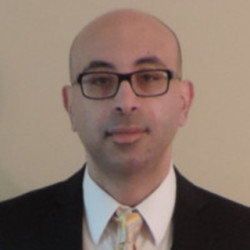The 39th annual meeting of the Associated Professional Sleep Societies LLC, held in Seattle from June 8-11, was a joint venture of the American Academy of Sleep Medicine (AASM) and the Sleep Research Society (SRS). The meeting was another exciting opportunity to meet domestic and international colleagues attending this year’s thrilling sessions. These sessions covered hot topics in sleep medicine, like sleep and obesity management and the evolution of machine learning technology in the field. These sessions included additional subjects related to safety and quality considerations in pediatric and adult sleep labs. They discussed the AASM's new accreditation model with the updated standards for accreditation, which took effect in January 2025.
This year was an extraordinary special occasion as it recognized the AASM 50th anniversary. In 1975, the AASM started as the American Association of Sleep Disorder Centers, which evolved into the current organization. Over the years, sleep medicine emerged as a separate specialty addressing the different sleep disorders that affect public health. The AASM and SRS guided this evolution and sleep research in general, expanding our understanding of the pathophysiology of sleep disorders. The theme selected for this year’s meeting was “Sleep and Dreams: 50 Years of Shaping the Future of Sleep Medicine.” To celebrate this historic milestone, the AASM established a new history webpage and featured an article that detailed how the AASM shaped the field over 50 years. The AASM hosted a special gala during the conference, which included a gala on Sunday, June 8th, at the Sheraton Grand Seattle. The AASM also presented a limited-edition 50th anniversary T-shirt. With over 9,500 members and 2,300 accredited sleep centers, the AASM continues implementing its strategic plans to advance sleep care and improve lives.
One of the interesting topics during the SLEEP 2024 meeting was the new possible oral therapy for sleep apnea that was under investigation for patients who cannot bear treatment options like CPAP. For this year’s meeting, management of obesity and sleep apnea was a major focus because, on December 20, 2024, the FDA approved tirzepatide, which became the first medicine to earn approval to treat moderate to severe obstructive sleep apnea (OSA) in adults with obesity. Tirzepatide will be implemented in conjunction with lifestyle changes like a well-balanced diet, regular exercise, and adequate sleep. Tirzepatide activates the receptors of the intestinal hormones’ glucagon-like peptide-1 (GLP-1) and glucose-dependent insulinotropic polypeptide (GIP), reducing appetite and body weight and thus improving OSA. The approval for moderate to severe OSA in adults with obesity was based on two randomized, double-blind, placebo-controlled studies of 469 adults without Type 2 diabetes. In both studies, participants randomly received either 10 or 15 milligrams of tirzepatide or a placebo once weekly for 52 weeks, and their apnea-hypopnea index (AHI) was measured. After 52 weeks of treatment in both studies, participants who received tirzepatide experienced a statistical as well as a clinically meaningful reduction in their AHI and symptoms. The meeting discussed the possible benefits of medications like tirzepatide and semaglutide for both OSA and obesity. The meeting stressed the benefit of a comprehensive approach to managing sleep apnea and obesity.
I look forward to future evolution as we continue to combine these options to treat OSA and obesity, as these choices will offer additional benefits for patients, especially those who cannot tolerate CPAP.
Dr. Morkous has no conflicts of interest to report.
Image by DrAfter123 / Getty Images







